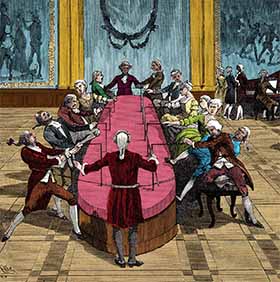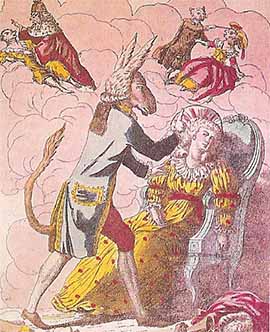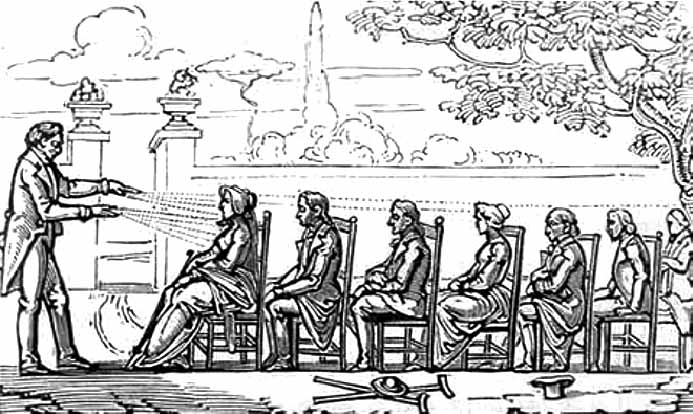Mesmerism Techniques
Can Animal Magnetism Cure People ?

Franz Anton Mesmer, famous charlatan doctor and philosopher, claimed at the end of the eighteenth century to cure diseases with the help of a revolutionary method, animal magnetism. It was in a cabinet in Vienna that Mesmer experimented his dubious techniques founded on the hypothetical existence of a universal fluid connecting celestial bodies and Earth to the livings. Mesmer postulated that all ills were due to an imbalance of this fluid and that magnetism made it possible to rebalance it. His cure became extremely popular in the years 1783 and 1784, but mesmerism would then be slandered by medicine of the time which concluded to quackery.

Tub therapy
In 1772, Franz Mesmer, then a graduate of the Vienna Medical School for a few years, began to test his theses of universal fluid on badly damned people. Mesmer says that by draining excess fluid with magnets that he orders for various areas of the body, he is able to restore balance and health.
In order to cure his patients, Mesmer brings them together around magnetic devices, wooden containers filled with water (tubs) interconnected by iron strings in which he immerses magnets, filings and sulfur. Sessions of magnetism take place in darkness and absolute silence; holding hands, patients all have an iron rod that they dive into their respective tubs and then apply to their suffering bodies thus forming a circular chain diffusing the magnetic current. Mesmer, meanwhile, walks around the office with a wand in his hand that he uses to touch patients. Sometimes, he simply leaves the wand and uses his barehands directly. This is how Mesmer begins to take interest in animal magnetism and starts developing mesmerism techniques.

From mineral magnetism to animal magnetism
Realizing that he manages to heal patients with or without magnets, Mesmer abandons mineral magnetism in favor of animal magnetism. Thus he published in 1779 a work entitled Mesmerism: The Discovery of Animal Magnetism, a true doctrine supporting the foundations of his science of magnetizer in 27 articles. On the basis of this charter, Mesmer undertakes to relieve many disorders such as blindness and paralysis, but also ophthalmia and hemiplegia. With the help of touch and massage-like treatments, he also aims to restore muscle tone and suppress tics of his neurotic patients. Mesmer obtained considerable successes with animal magnetism such as the miraculous cure of a man named Osterwald and that of Baron Horka. But Mesmer's talents as a magnetizer did not seem to impress the medical faculty, which sees in it nothing more than a pure hoax and a form of charlatanism. Franz Anton Mesmer is forced to give up his practices and fell back to Constance until his death in 1815.
Mesmerism at the origin of hypnosis

Many followers of Mesmerism have perpetuated the work of Mesmer and continued to treat the ills only aided by touch. Marquis de Puységur, disciple of Mesmer, realized that animal magnetism allowed him to induce in some patients a kind of synthetic coma, a half-sleep which he calls spasmodic sleep. The idea is taken up by a dentist in England who uses the technique as a means of anesthesia and renames it hypnotism. The famous psychoanalyst Sigmund Freud demonstrates later in his practice that hypnosis techniques allow for the agitation of the unconscious, especially in people with hysteria, those who are easily influenced as well as those with a very fertile imagination.









































































































































































































































































































































